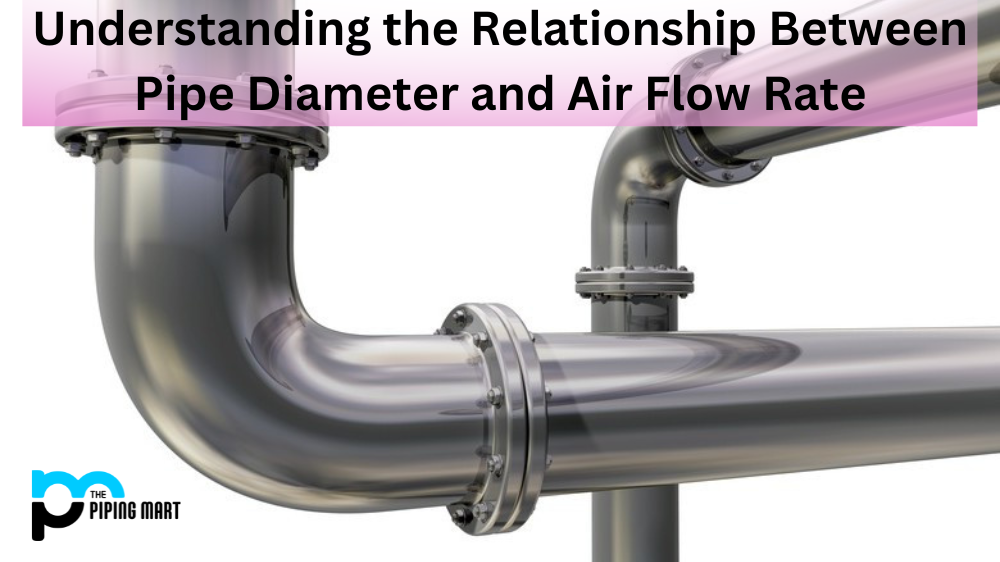Have you ever wondered why some pipes have a larger diameter than others? If you’ve ever looked into air flow rate, you might be aware that one of the factors that affect it is the size of the pipe. In this blog post, we will explore how to pipe diameter relates to air flow rate so you can better understand what goes into planning an efficient system.
Air Flow Rate
The airflow rate is measured in cubic feet per minute (CFM). This measurement helps determine how well a system is performing based on the volume of air that is being pushed through it. The higher the CFM, the more powerful your system is. But how does pipe diameter come into play when determining CFM? Let’s take a look.
Pipe Diameter
Pipe diameter is the measurement of the inside diameter of a pipe. It is most commonly measured in inches or millimeters. The outside diameter of a pipe is larger than the inside diameter, and the difference between the two is known as the pipe wall thickness.
Pipe Diameter vs Air Flow Rate
There are two main components to consider when exploring how to pipe diameter affects air flow rate—friction loss and velocity. Friction loss refers to the amount of energy that is lost due to friction between moving particles within a fluid or gas as it passes through a pipe. As pipe diameter increases, friction loss decreases—meaning there is less energy lost during movement and, thus, more energy available for pushing air through your system.
Velocity also plays an important role in determining CFM because it affects how quickly air moves through a given space. The larger the pipe diameter, the faster air can move through and out of it. This means that if you have a large enough pipe diameter, you can achieve high levels of CFM without having to work as hard to push air out of your system.
Air flow rate is the amount of air that passes through a pipe in a given amount of time. It is typically measured in cubic feet per minute (CFM). The air flow rate is affected by the pipe diameter, as larger pipes allow more air to pass through them than smaller pipes. The air flow rate also depends on the pressure of the air, as higher pressures allow more air to pass through a pipe than lower pressures.
The pipe diameter is the physical size of the pipe, while the air flow rate is the amount of air that passes through the pipe in a given amount of time. The larger the pipe diameter, the more air can flow through it, but the air flow rate is determined by other factors such as pressure and temperature.
Conclusion:
When designing any type of HVAC system or other airflow-dependent apparatus, understanding how to pipe diameter relates to airflow rate is essential for achieving optimal performance. Larger pipes generally mean less friction loss and higher velocity, which allows for higher levels of CFM with less effort—making them ideal for most applications where high-velocity airflow is desired. Ultimately, when selecting pipes for your next project, keep in mind that bigger isn’t always better—but it usually helps!

A passionate metal industry expert and blogger. With over 5 years of experience in the field, Palak brings a wealth of knowledge and insight to her writing. Whether discussing the latest trends in the metal industry or sharing tips, she is dedicated to helping others succeed in the metal industry.




